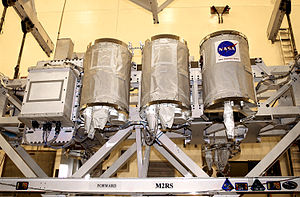
Space Shuttle Columbia (OV-102) was a Space Shuttle orbiter manufactured by Rockwell International and operated by NASA. Named after the first American ship to circumnavigate the globe, and the female personification of the United States, Columbia was the first of five Space Shuttle orbiters to fly in space, debuting the Space Shuttle launch vehicle on its maiden flight on April 12, 1981 and becoming the first spacecraft to be re-used after its first flight when it launched on STS-2 on November 12, 1981. As only the second full-scale orbiter to be manufactured after the Approach and Landing Test vehicle Enterprise, Columbia retained unique external and internal features compared to later orbiters, such as test instrumentation and distinctive black chines. In addition to a heavier aft fuselage and the retention of an internal airlock throughout its lifetime, these made Columbia the heaviest of the five spacefaring orbiters; around 1,000 kilograms heavier than Challenger and 3,600 kilograms heavier than Endeavour when originally constructed. Columbia also carried ejection seats based on those from the SR-71 during its first six flights until 1983, and from 1986 onwards carried an imaging pod on its vertical stabilizer.
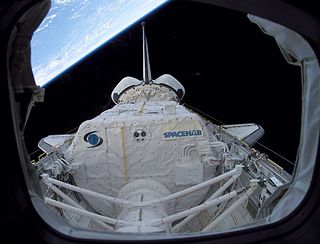
STS-107 was the 113th flight of the Space Shuttle program, and the 28th and final flight of Space Shuttle Columbia. The mission ended on February 1, 2003, with the Space Shuttle Columbia disaster which killed all seven crew members and destroyed the space shuttle. It was the 88th post-Challenger disaster mission.
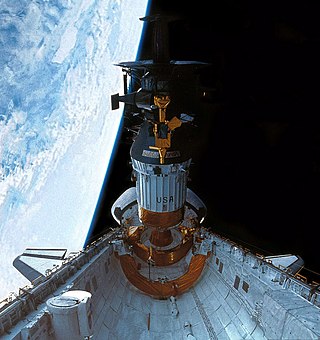
STS-34 was a NASA Space Shuttle mission using Atlantis. It was the 31st shuttle mission overall, and the fifth flight for Atlantis. STS-34 launched from Kennedy Space Center, Florida, on October 18, 1989, and landed at Edwards Air Force Base, California, on October 23, 1989. During the mission, the Jupiter-bound Galileo probe was deployed into space.

STS-41 was the 36th Space Shuttle mission and the eleventh mission of the Space Shuttle Discovery. The four-day mission had a primary objective of launching the Ulysses probe as part of the "International Solar Polar Mission" (ISPM).

STS-35 was the tenth flight of Space Shuttle Columbia, the 38th shuttle mission. It was devoted to astronomical observations with ASTRO-1, a Spacelab observatory consisting of four telescopes. The mission launched from Kennedy Space Center in Florida on December 2, 1990.
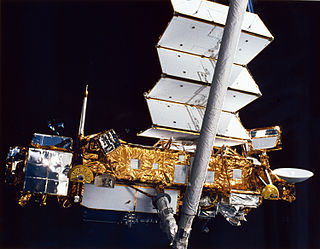
STS-48 was a Space Shuttle mission that launched on September 12, 1991, from Kennedy Space Center, Florida. The orbiter was Space ShuttleDiscovery on her 13th flight. The primary payload was the Upper Atmosphere Research Satellite (UARS). The mission landed on September 18 at 12:38 a.m. EDT at Edwards Air Force Base on runway 22. The mission was completed in 81 revolutions of the Earth and traveled 3,530,369 km (2,193,670 mi). The 5 astronauts carried out a number of experiments and deployed several satellites. The total launch mass was 108,890 kg (240,060 lb) and the landing mass was 87,440 kg (192,770 lb).

STS-56 was a NASA Space Shuttle Discovery mission to perform special experiments. It was Discovery's 16th flight. The mission was launched from Kennedy Space Center, Florida, on April 8, 1993.

STS-62 was a Space Shuttle program mission flown aboard Space ShuttleColumbia. The primary payloads were the USMP-02 microgravity experiments package and the OAST-2 engineering and technology payload, both in the orbiter's cargo bay. The two-week mission also featured a number of biomedical experiments focusing on the effects of long duration spaceflight. The landing was chronicled by the 1994 Discovery Channel special about the Space Shuttle program and served as the show's opening. A C.F. Martin backpacker guitar was also flown aboard Columbia during the mission.

STS-66 was a Space Shuttle program mission that was flown by the Space Shuttle Atlantis. STS-66 launched on November 3, 1994, at 11:59:43.060 am EDT from Launch Pad 39-B at NASA's Kennedy Space Center. Atlantis landed at Edwards Air Force Base on November 14, 1994, at 10:33:45 am EST.
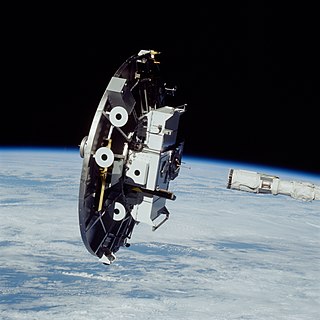
STS-80 was a Space Shuttle mission flown by Space Shuttle Columbia. The launch was originally scheduled for October 31, 1996, but was delayed to November 19 for several reasons. Likewise, the landing, which was originally scheduled for December 5, was pushed back to December 7 after bad weather prevented landing for two days.

STS-87 was a Space Shuttle mission launched from Launch Complex 39B of the Kennedy Space Center on 19 November 1997. It was the 88th flight of the Space Shuttle and the 24th flight of Columbia. The mission goals were to conduct experiments using the United States Microgravity Payload (USMP-4), conduct two EVAs, and deploy the SPARTAN-201 experiment. This mission marked the first time an EVA was performed from Columbia. EVAs from Columbia were originally planned for STS-5 in 1982 and STS-80 in 1996, but were canceled due to spacesuit and airlock problems, respectively. It also marked the first EVA conducted by a Japanese astronaut, Takao Doi.

STS-95 was a Space Shuttle mission launched from Kennedy Space Center, Florida on 29 October 1998, using the orbiter Discovery. It was the 25th flight of Discovery and the 92nd mission flown since the start of the Space Shuttle program in April 1981. It was a highly publicized mission due to former Project Mercury astronaut and United States Senator John H. Glenn Jr.'s return to space for his second space flight. At age 77, Glenn became the oldest person to go into space, a record that remained unbroken for 23 years until 82-year-old Wally Funk flew on a suborbital flight on Blue Origin NS-16, launching on 20 July 2021, which in turn was broken by William Shatner at age 90 on 13 October 2021 and then by Ed Dwight on May 19 2024. Glenn, however, remains the oldest person to reach Earth orbit. This mission is also noted for inaugurating ATSC HDTV broadcasting in the U.S., with live coast-to-coast coverage of the launch. In another first, Pedro Duque became the first Spaniard in space.

Getaway Special was a NASA program that offered interested individuals, or groups, opportunities to fly small experiments aboard the Space Shuttle. Over the 20-year history of the program, over 170 individual missions were flown. The program, which was officially known as the Small, Self-Contained Payloads program, was canceled following the Space Shuttle Columbia disaster on February 1, 2003.

Ellen Louise Shulman Baker is an American physician and a former NASA astronaut. Baker is a veteran of three shuttle flights and logged more than 686 hours in space. Baker served as Chief of the Education/Medical Branch of the NASA Astronaut Office until her retirement in 2011 after more than 30 years of service to NASA.

The Upper Atmosphere Research Satellite (UARS) was a NASA-operated orbital observatory whose mission was to study the Earth's atmosphere, particularly the protective ozone layer. The 5,900-kilogram (13,000 lb) satellite was deployed from Space Shuttle Discovery during the STS-48 mission on 15 September 1991. It entered Earth orbit at an operational altitude of 600 kilometers (370 mi), with an orbital inclination of 57 degrees.

The Columbia Scientific Balloon Facility (CSBF), established in 1961 and formerly known as the National Scientific Balloon Facility (NSBF), is a NASA facility responsible for providing launch, tracking and control, airspace coordination, telemetry and command systems, and recovery services for unmanned high-altitude balloons. Customers of the CSBF include NASA centers, universities, and scientific groups from all over the world.

The Hitchhiker Program (HH) was a NASA program established in 1984 and administered by the Goddard Space Flight Center (GSFC) and the Marshall Space Flight Center (MSFC). The program was designed to allow low-cost and quick reactive experiments to be placed on board the Space Shuttle. The program was discontinued after the Space Shuttle Columbia disaster of STS-107.

The Solar Backscatter Ultraviolet Radiometer, or SBUV/2, is a series of operational remote sensors on NOAA weather satellites in Sun-synchronous orbits which have been providing global measurements of stratospheric total ozone, as well as ozone profiles, since March 1985. The SBUV/2 instruments were developed from the SBUV experiment flown on the Nimbus-7 spacecraft which improved on the design of the original BUV instrument on Nimbus-4. These are nadir viewing radiometric instruments operating at mid to near UV wavelengths. SBUV/2 data sets overlap with data from SBUV and TOMS instruments on the Nimbus-7 spacecraft. These extensive data sets measure the density and vertical distribution of ozone in the Earth's atmosphere from six to 30 miles.
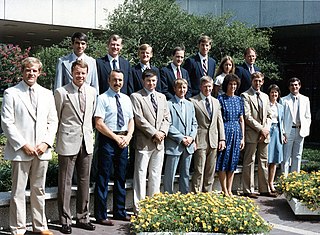
NASA Astronaut Group 10 was a group of 17 astronauts that were announced on May 23, 1984 and consisted of seven pilots and ten mission specialists. Although selected in 1984, no member of the group would fly until 1988 due to the Challenger disaster and the resulting grounding of the Space Shuttle fleet.

The Joint Polar Satellite System (JPSS) is the latest generation of U.S. polar-orbiting, non-geosynchronous, environmental satellites. JPSS will provide the global environmental data used in numerical weather prediction models for forecasts, and scientific data used for climate monitoring. JPSS will aid in fulfilling the mission of the U.S. National Oceanic and Atmospheric Administration (NOAA), an agency of the Department of Commerce. Data and imagery obtained from the JPSS will increase timeliness and accuracy of public warnings and forecasts of climate and weather events, thus reducing the potential loss of human life and property and advancing the national economy. The JPSS is developed by the National Aeronautics and Space Administration (NASA) for the National Oceanic and Atmospheric Administration (NOAA), who is responsible for operation of JPSS. Three to five satellites are planned for the JPSS constellation of satellites. JPSS satellites will be flown, and the scientific data from JPSS will be processed, by the JPSS – Common Ground System (JPSS-CGS).
